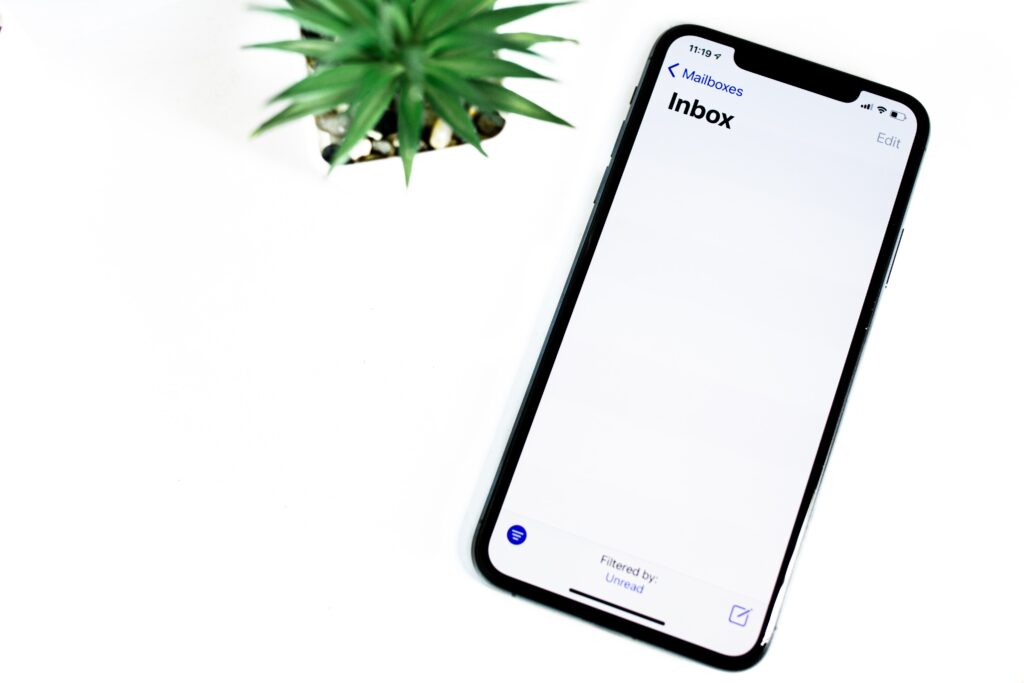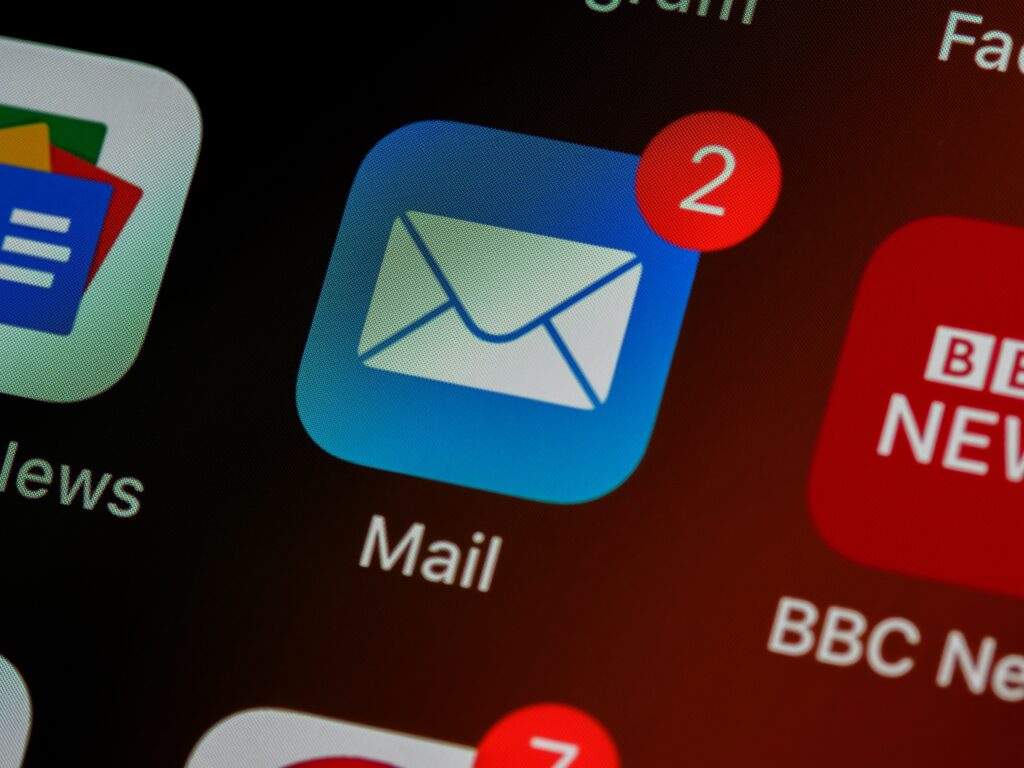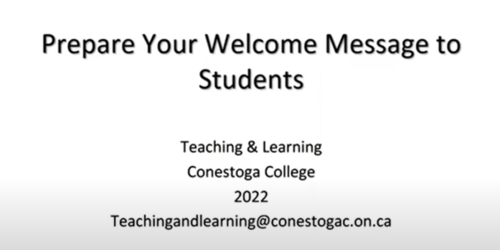Messaging Your Students
Faculty can send eConestoga announcements and Conestoga email to students as part of preparing students for class and assignments. But how do you encourage your fully online learners to read and respond to your messages?
Note: If you are just getting started with sending messages to your students, you may wish to first read the post Send Your First Course Welcome to Students.
Course Messaging and Students

Course messages can provide information that nudges (directly influences) or primes (subtly influences) (Inkelaar & Simpson, 2015) in relation to understanding content, completing assignments, meeting due dates, staying on track, and seeking “help” supports.
Reach-out messages can be motivational and support learning. One nursing study found that weekly emails were effective at increasing students’ use of empathetic communication, a requirement for the course. The authors attributed the success of the initiative to the fact that emails required “only a small effort […] to open and read the short reminders” (Varagona et al., 2021, n.p.).
Course messages can also support students with life challenges. According to Registrar Services of one post-secondary institution, attrition risk students are among those with homesickness, academic issues, social engagement, financial issues, family crises, and leaves of absence (Hope, 2016).
Carefully crafted course messages can help keep online students on track with learning as they move between different devices, skim content-heavy course information, and use smaller screens that can make reading long content more difficult (Straushein, 2016).
Tips for Writing Course Messages (Email and Announcements)
Keller’s ARCS theory of motivation (1998) suggests that an effective email message for students should achieve four goals: get the Attention of students, be Relevant to what they perceive are their needs, enhance their Confidence with the process, and increase their Satisfaction with their progress towards learning goals. Here are some ideas to consider for each section of the ARCS model:
Attention
Simplify your message
- Reduce unnecessary information that can lead to long messages and information overload. Instead, hyperlink to “details” or “more information.”
- Use simple language and avoid jargon.
- Avoid repetition, and focus on sharing new information.
- Where possible, minimize the number of “calls to action” in a single message (Sutton, 2017).
- Use images and bullet points, but keep messages short and mobile-friendly.
Pay attention to subject lines
Consider specific subject lines that grab students’ attention. Here is a case that exemplifies this point:
Texas Wesleyan University sent out a student email with the subject line ‘Your Opinion Counts’, regarding a student survey. The email message yielded a 2.23 percent survey response rate. TWU then sent the same email with a new subject line: “You’ve Been Selected for Participation.” With changing only the subject link, the survey received a 23.86 percent response rate (Sutton, 2017, par. 14).
Relevance
Target your message
Large messages require students to filter what may be irrelevant to them. If students need different information, then instead of sending a single long message send a targeted email batches to the students who need only that specific information.
Tailor your message
Personalized messages have shown a higher level of motivation and confidence in students (Kim & Keller, 2008). To personalize, identify your student by name, and call out something unique about the student or reference information that signals the message was written just for them. Message individual groups rather than all groups together.
Confidence
Use consistent messaging
Use a consistent tone and format for regular communications to aid students with finding the information that you provide for them. If your messages have a cohesive design they recognize, students will have an easier time locating the information they need.
As well, provide a consistent messaging plan so that students receive the same types of messages on the same days of the week. Note that students are less likely to open and read emails in the early morning and late afternoon, and on Fridays and holidays (Sutton, 2017).
Describe course involvement
Feedback about students’ own involvement in the course can help them to understand their status and progress. Your feedback may describe some aspect of course involvement, compare the student’s involvement to a class average, or provide a comparison to a pre-determined standard.
Note that comparison and evaluation feedback risk making the student feel discouraged, so it is best to pair this type of information with a tailored message of support and encouragement (O’Hara, 2019).
Satisfaction
Use goal-oriented messaging
How you write your messages may have a greater impact on some students than on others. For instance, some students may be interested in how the course connects with future employment, while others may be interested in pursuing ideas that matter to them. To help students connect with what matters to them, craft your message in a way that balance different goals that students may have.
Build email responsibilities into the curriculum
Encourage students to see reading and responding to your messages as part of their success in the course. Explain the importance of checking email frequently and carefully in your course information and orientation sections. To normalize email usage, at the beginning of the semester, ask students to response to a prompt from you with an email. Throughout the term, ask all students to send a “feedback on feedback” email after receiving an assignment.
Moving beyond Emails for Student Success

While emails and Announcements can help re-engage students, it is also up to allot sufficient time and effort to studying and learning. One study on over 100 students receiving motivational emails found that while motivation and confidence increased, study habits (study time) did not increase as a result of the messages they received (Kim & Keller, 2008).
Online courses written mails and announcements should be part of a larger complement a communication strategy that includes “face and voice” messages from the professor. This can include recorded audio or video messages as well as optional synchronous online office hours and/or appointments. Jackson and Knupsky (2015) highlight making office hours part of an assignment, meeting with groups of students with similar questions, and offering theme-based office hours for online courses.
On engaging students in online courses, Inkelaar & Simpson (2015) conclude that those “who can combine proactive motivational activities [like emails] with more personal and individual support are the most likely to challenge the distance education deficit” (n.p.).
Read More
For more information on communicating and connecting with online students, see this resource in the Library Catalogue:
Rebecca A. Glazier. (2021). Connecting in the Online Classroom : Building Rapport Between Teachers and Students. Johns Hopkins University Press.
References
Hellman, P. (2017). You’ve Got 8 Seconds : Communication Secrets for a Distracted World. AMACOM. http://ra.ocls.ca/ra/login.aspx?inst=conestoga&url=https://search-ebscohost-com.conestoga.idm.oclc.org/login.aspx?direct=true&db=nlebk&AN=1449573&site=ehost-live&scope=site
Hope, J. (2016, June 16). Make good use of data to retain your students. Student Affairs Today, 16(11), 1-5. https://doi-org.conestoga.idm.oclc.org/10.1002/tsr.30253
Inkelaar, T., & Simpson, O. (2015). Challenging the ‘distance education deficit’ through ‘motivational emails.’ Open Learning, 30(2), 152–163. https://doi-org.conestoga.idm.oclc.org/10.1080/02680513.2015.1055718
Jackson, L. E., & Knupsky, A. (2015). “Weaning off of email”: Encouraging students to use office hours over email to contact professors. College Teaching, 63(4), 183–184. https://doi-org.conestoga.idm.oclc.org/10.1080/87567555.2015.105272
Keller, J. (1998). Development and use of the ARCS model of instructional design. Journal of Instructional Development, 10, 2–10.
Kim, C.M, & Keller, J. (2007). Effects of motivational and volitional email messages (MVEM) with personal messages on undergraduate students’ motivation, study habits and achievement. British Journal of Educational Technology 39(1), 36-51.
O’Hara, R. 2019, May 15). How to Get College Students to (Maybe) Check Their E-mail. Psychology Today. https://www.psychologytoday.com/us/blog/nudging-ahead/201905/how-get-college-students-maybe-check-their-e-mail
Sutton, H. (2017). Don’t get lost in the noise: Craft emails students will read. Student Affairs Today 20(9), 6-7.
Varagona, L., Myers, R., & Wilson, A. (2021). Weekly email reminders increase nursing students’ use of empathic communication: A randomized controlled trial. Nurse Educator, 46(6), 366–371. https://doi-org.conestoga.idm.oclc.org/10.1097/NNE.0000000000000978
Straumsheim, C. (2016, March 2,). Read and unread. Inside Higher Ed. https://www.insidehighered.com/news/2016/03/02/study-explores-impact-social-media-texting-email-use



